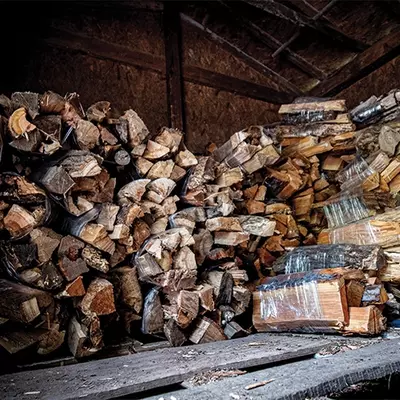

In the mid 1700s, Scot-Irish immigrants, after making a long and sometimes sorrowful journey, found themselves a reminder of their beloved homeland when they saw the rolling green mountains of Southern Appalachia. Over the course of the next century and a half, the community of Greenbrier was born. Through the valley flowed the pristine waters of the Little Pigeon River, with the head waters forming from many tributaries including the areas of Mt. Guyot, the Pinnacle, Ramsey Cascades and Porters Flats. Over 800 people lived in the general area now accessible by the Greenbrier entrance to the Great Smoky Mountains National Park, less than half a mile east of the Gatlinburg city limits at Buckhorn. It was a thriving, yet isolated community with churches, schools, several stores, sawmills, a hotel and even a campground at one time. In the early 1920s, discussion began on the creation of the Great Smoky Mountains National Park. Widespread logging in the Appalachia, including Greenbrier, was decimating the dense forests. In a historic and controversial move, the park was created and the process of buying the private property and removal of the once again displaced families began.
The National Park Service made several very unusual concessions in negotiating the purchase of the beloved homes and farms of the mountain people: They would never charge an entrance fee to the Great Smoky Mountains National Park; the family burial areas would be maintained by the NPS; future family members could be buried at their family cemeteries inside the national park; and clear access to the cemeteries was to be maintained for a yearly decoration day.
By 1926-28, most of the families had reluctantly accepted that they must move from their beloved cove. Many went just a mile or so outside the Great Smoky Mountains National Park boundary in Emerts Cove and settled there. They were within walking distance back to their old homeplace and yet could stand at their new homes and see the familiar Pinnacle mountain range casting long shadows on their now abandoned homes. Just a few yards from the park boundary was the property owned by Noah Ogle. It was a beautiful island surrounded by the waters of the Little Pigeon River. The island was used as a gathering place to celebrate the 4th of July and Labor Day with dinner on the grounds and music. It also was used to graze cattle and as a baseball field for the young men. Many old-timers will tell you the “cow patties” were used as the bases!
The island is now home to the Greenbrier Campground. The water still flows as pure and as cold as it did more than 100 years ago, and the Little Pigeon River through the Greenbrier Campground is now on the coveted list of “Outstanding Natural Resource Waters,” an honor bestowed upon the stream in 1998 by the Tennessee Division of Water Control Board. At the center of the campground, and probably the island’s most distinctive feature, is the Flint Rock swimming hole. For generations, the old swimming hole has been the destination of both local residents and tourists to the area. In the past, it was used as baptismal waters for many of the area churches. The large rock has many invisible footprints of the old and young alike climbing up to jump into the icy pool that waits below. At the north end of the campground property is the rustic Emerts Cove Covered Bridge, a popular destination for photographers and artists.
Come visit our Smoky Mountain campground to explore its rich history and enjoy everything it has to offer!